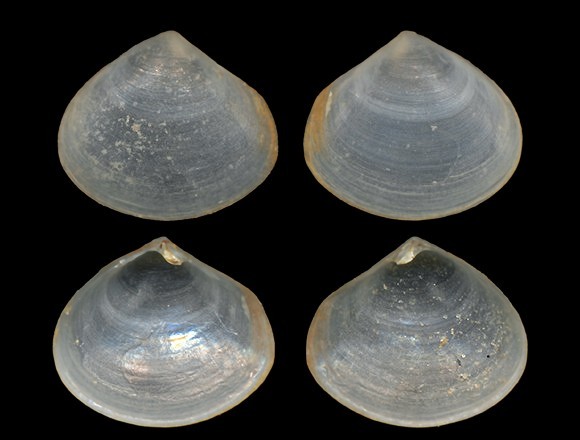
Original taxon: Mactra tenuis.
Synonyms: bielzi, bielziana, nucleolata, trigona.
2-3m deep, on sand, Jerba, Tunisia. 6mm.
« Mactra with a compressed, sub-triangular, equilateral, semi-pellucid, thin, white shell, concentrically wrinkled ; umbo small, central, much produced, and not turning to either side. Inside moderately smooth and glossy, with a broad, but nearly obsolete, conic cicatrix, running to a point across the middle of the shell, towards the beak ; hinge furnished with a bifurcated tooth, and a narrow foviola ; and remote, lateral, laminated teeth, one on each side in one valve ; in the other a plain single tooth, with a corresponding cartilage cavity, but no lateral laminae. Length a quarter of an inch ; breadth rather more… » – G. Montagu: Testacea Brittanica, London 1803 p.572.
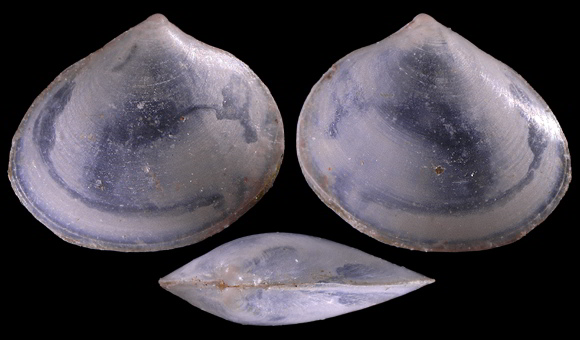
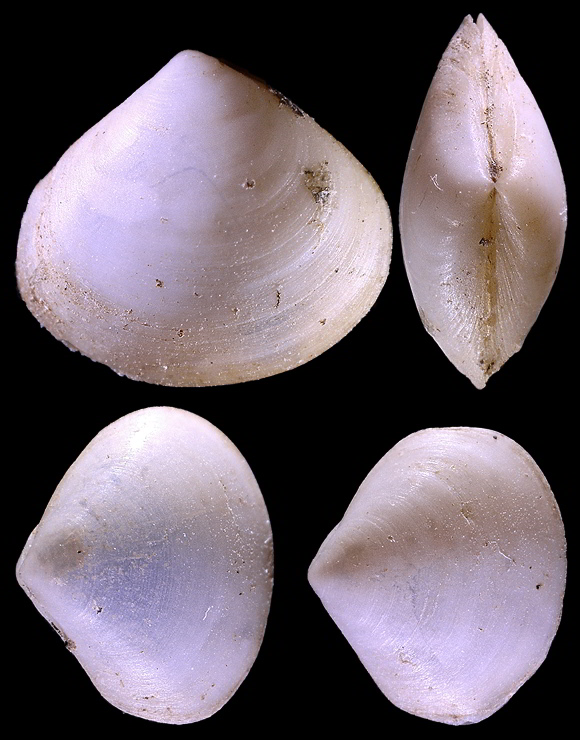
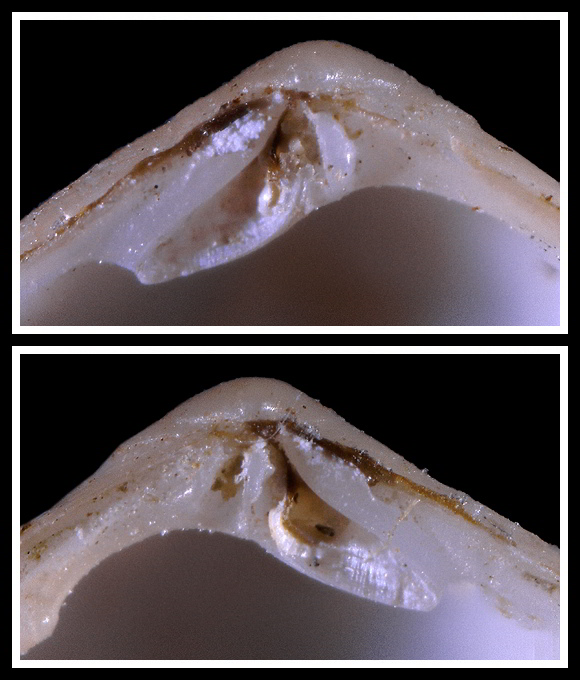
« The hinge is somewhat similar to that of M. compressa, but the foviola is not so broad, and is at once distinguished by the lateral teeth, which that shell is destitute of ; it differs also in shape, being much more angulated, and produced at the beak, as well as the cicatricula. » – G. Montagu: Ibid. The word foviola used by Montagu seems to be the latin foveola, from fovea: excavation, hole. A foveola might be a little depression.
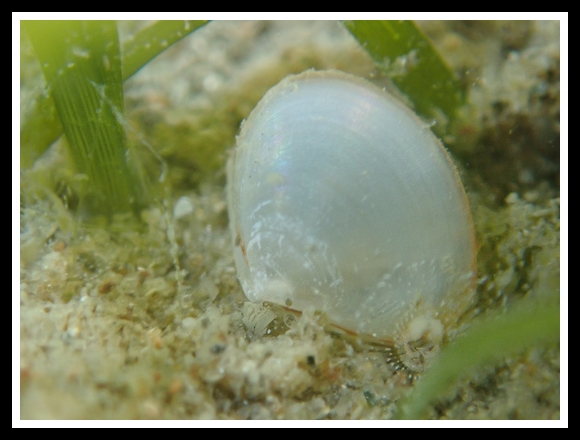
– (CC BY-NC-SA) –